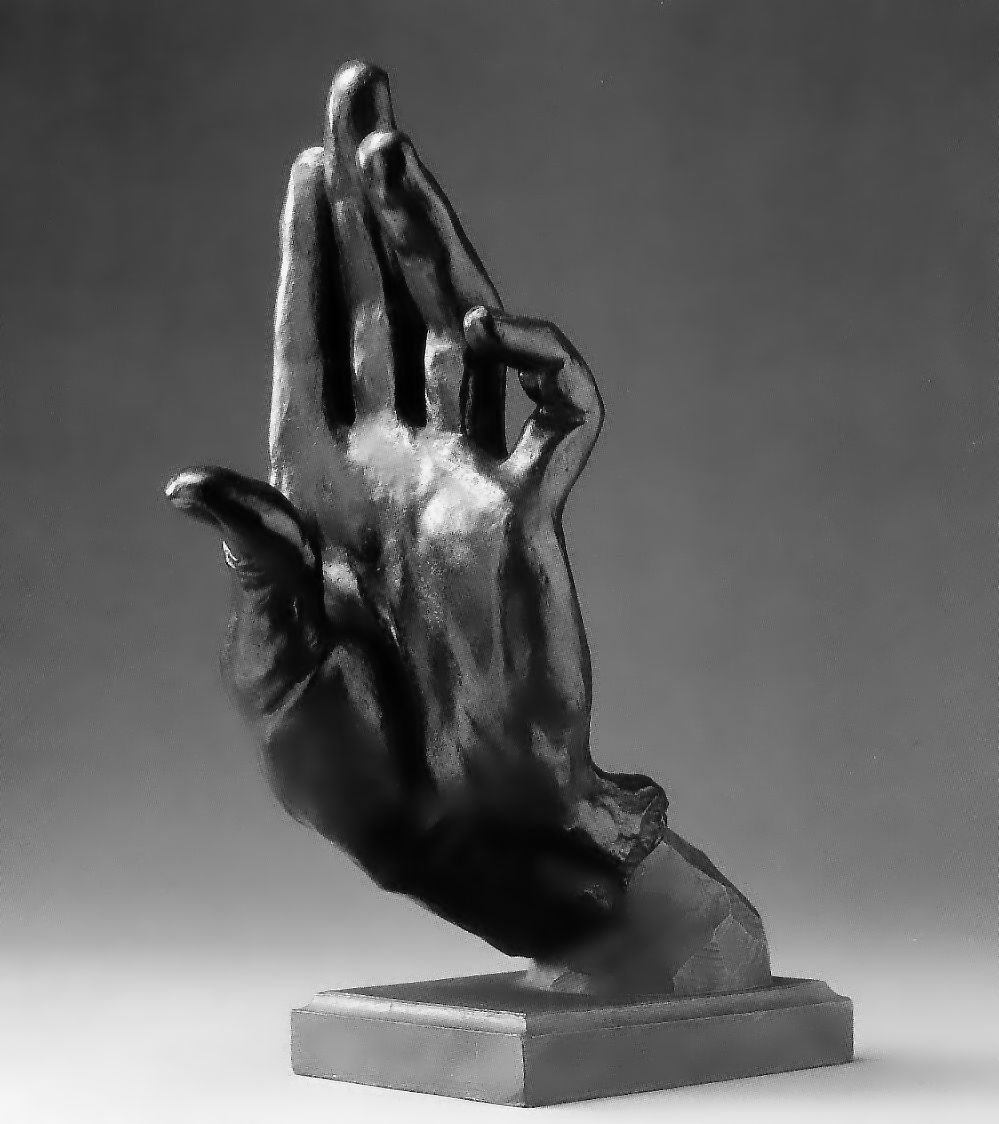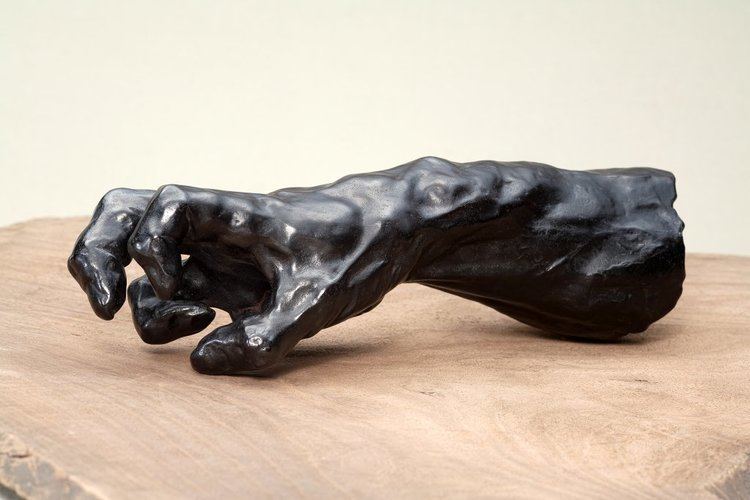
11th of May, 2020
This piece was originally published on the website RateYourMusic.com. The site only offers the ability to review music and film, but since all my work was already there and I had found friends and a very small audience there I decided to carry on posting my written work there.

When I was thinking about how to tackle writing about Kotaro Takamura's Hand, (1918), I wondered as I always do about how I should, if at all, bring in relevant contextual information about the artist. He worshipped Rodin, and wrote poetry about his wife, a fellow artist and prominent figure in early Japanese feminism. I'm always conscious when thinking about art of the extent to which my criticisms of the piece in question are based around some essential characteristic property of the medium, and for sculpture the most essential appears to be space. For whatever reason today in my brain I settled into a groove of imagining the word "space" repeated over and over—a cartoonish tunnel vision which precluded the elegant weaving together of Takamura's personal story with the physical mechanics of the universe in which he made his art. Space space space space space. It lets one consider the other ways the word is used.
In the most general sense, space is a framework of distance and orientation. In some sciences the word can be used to refer to an abstract array of data, like in a graph. In a scatter plot graph, two variables like, for instance, age and height, can be plotted as points on a two dimensional space. Thus, abstract ideas or perhaps symbols without any obvious spatial character can be plotted as dimensions of a space, and the “dimensionality” of the space is as high as one wants or needs it to be, according to the number of variables. I bring this up so I can talk about the "dimensionality" of a thing: how many dimensions would a space need to be to describe that thing? A circle only requires one piece of information to perfectly define it: its radius. A rectangle needs two: its length and height. A cuboid requires three, and so on. What is the dimensionality of a hand?
Precisely answering this question is impossible of course, but it is possible to compare the dimensionality of two things and see that one must have a higher number than another. An ear for instance would be simpler to describe than a nose. An ear is just the way it is—though much more complex than a cuboid it can't pose or express, besides going red during embarrassment. A nose can do so much more—it can wrinkle and sniff and sneeze, and even when it isn't in motion the shape seems to vary more from person to person. Another way to put it is that drawing a caricature without ears is much easier than without a nose, the nose conveys more character. A sculpture of an ear is thus not likely to produce shock and awe, it's going to look pretty much like any other ear as long as it's realistic. A realistic sculpture of a nose perhaps isn't going to set the art world on fire either but it's obviously a much more capable vehicle, because the subject has a higher dimensionality. The human eye on the other hand is spectacularly highly dimensional. We call our eyes the windows to the soul—I have a habit of forming character judgements about people based on a perceived depth to the way their eyes flutter and blink and consider. Intuitively I believe the eye might be the most highly dimensional thing we have, but the hand could be its equal.
This is why I love hand studies, almost unconditionally. A hand is a tangled heap of foreshortened and overlapping slender cylinders, and from under the surface of the skin emerge the lumps of knuckles and tendons. Around these the skin wrinkles up—with age the irregularities grow more pronounced, and (though this isn’t expressed in sculpture) the hands of a person also jitter constantly with an uncontrolled zest that makes that body part more than any other the one which appears excited to be alive. The scope of the hand's possibility as a vehicle for expression is pretty astonishing for a thing that isn't even a part of our face.

I tend to like all hand sculptures at least a little bit, but I like some more than others. This one happens to be my favourite. One of Takamura’s other hands (pictured above, it's proper name is Arm) helps demonstrate why. This hand here is a monstrous and gory piece. The intensity of the pose is ferocious—the fingers grip in agonising seizure and the arm shudders with an energy that makes the whole thing look like it could explode. In comparison, Hand (1918) looks graceful—the slender fingers appear to place themselves where they are comfortable, at rest. If you actually try and replicate the position of the hand (and I do urge you to try, if you can find enough reference images of it to get a good grasp of how weird it is) it becomes clear that this isn’t the case though. The whole hand begins to ripple with a bodily electricity that we all intuitively understand to rush through our bodies when we move—an energy that sees lactic acid rush through the forearm and down into the base of the thumb. The fascinating thing about this position is that it really feels like the hand is diverting this energy in a spiral shape, and rarely can such an abstract observation be felt so immediately via the undeniable sensation of bodily awareness. Unlike the difficult, angry pain of the first hand, this one uses its delicate grace to build all the pent up twitchy energy of the body into the appendage most happy to be alive. The beauty of the natural biological thing channelling this electricity into the perfect mathematical symbol of the spiral makes this piece feel religious to me. It brings out the God in humans, I suppose. A happy, affirmative, electric spiral of a God, felt intuitively in the very body. Isn't it amazing that a pockmarked little piece of bronze can impart such a beautiful sense of spiritual majesty?